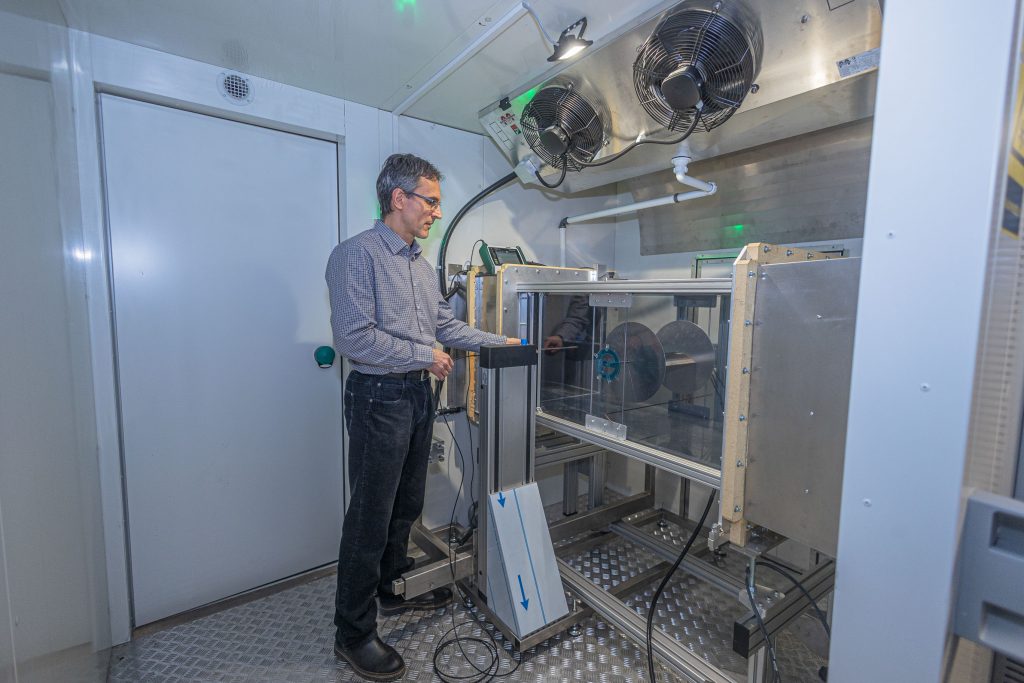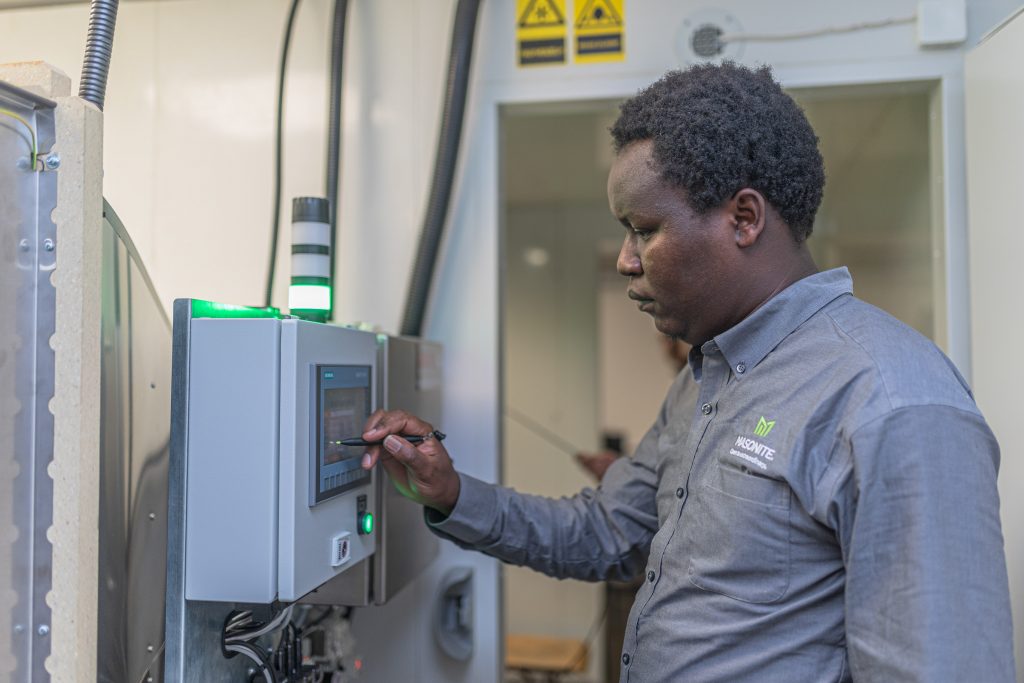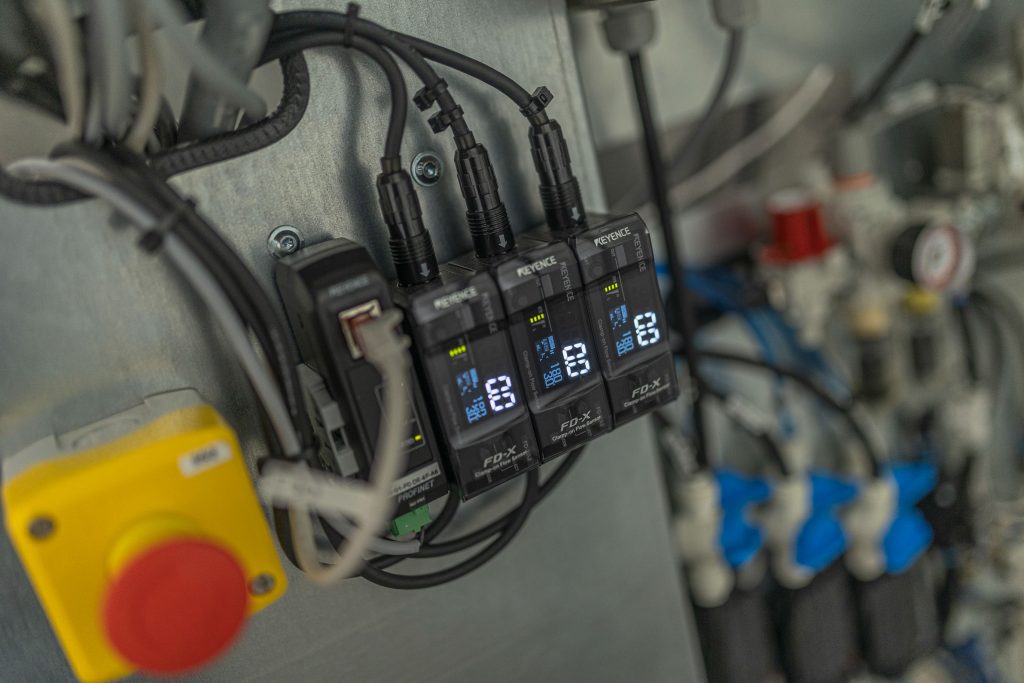The Fluid Mechanics Laboratory of the Savaria Institute of Technology provides the opportunity for experimental study of fluid flow processes. Sensors and equipment are available to measure parameters characterizing the flow, such as velocity, pressure, temperature (on solid surfaces, in liquids, and gases alike), and humidity. In the cold wind tunnel, the icing of structures can also be examined, which is unique in Central Europe. With its modern equipment and tools, the laboratory is suitable for conducting research and industrial projects, as well as for use in mechanical engineering education at all levels (BSc, MSc, PhD).

The equipment of the laboratory includes:
- Wind tunnel (with possibility of cooling and water injection)
- Phase Doppler Particle Analyzer (PDPA, laser measurement device for measuring the velocity and size of flowing particles)
- Multifunctional flow measurement and data acquisition device with sensors (for measuring pressure, velocity, temperature and humidity)
Wind tunnel
The closed-loop, horizontal wind tunnel is applicable for modelling internal flow and flow past immerged bodies. This wind tunnel is unique in Hungary, being the only one when put into operation, which is capable of examining icing processes in addition to typical flow phenomena due to the possibility of water injection and cooling. The wind tunnel has numerous application areas, including transport via pipeline; automotive industry (flow around vehicles); flow around buildings and structures; and turbomachines (pumps, fans, turbines). Parameters characterizing the flow (pressure, velocity, temperature, humidity) can be measured with the use of sensors and additional devices placed in the wind tunnel, and the effects of these parameters can be studied on the flow and on the structure examined.
The special feature of the wind tunnel is the possibility of cooling and water injection via the nozzles placed before the contraction section. Two-phase flows can be modelled by injecting water droplets into the airflow, and an aerosol cloud can be created after cooling the airflow below freezing point, which simulates atmospheric clouds causing icing. The properties of this aerosol can be adjusted and varied over a wide range in the wind tunnel. Thus, icing processes can also be simulated, which aids in studying the formation of ice and understanding the consequences of ice accumulation on aircraft wings, wind turbine blades, power transmission lines, pantographs of electric locomotives, vehicles, or even trees. Studies conducted in the wind tunnel contribute to understanding such processes that cause problems and damages, and to developing solutions for protection against them.
Main characteristics of the wind tunnel:
- Total length of closed loop: 24 m.
- Cross-section of the test section: 0.5 m x 0.5 m, length: 1 m.
- Contraction ratio: 1:5
- Maximum velocity in the test section: 35 m/s.
- Lowest temperature in the test section: –20°C.
- Water injection through 3 nozzles, each with adjustable flow rate in the range of 10-100 cm3/min.
- Insulated cabin around the test section, with an area of 5 m2 and inner height of 2.1 m.
Phase Doppler Particle Analyzer (PDPA)
The Phase Doppler Particle Analyzer (PDPA) is a laser measurement device capable of measuring the velocity, size, and concentration of flowing particles in the range from one micrometre to several hundred micrometres. The injection of water in the wind tunnel allows the creation of a flow of fine dispersed water droplets forming an aerosol. The PDPA measurement technique makes it possible to examine the spatial distribution of aerosol particles and measure their velocity. Such aerosol has numerous applications, including cloud formation causing icing, in agriculture primarily in the field of pest control, various surface treatments of machines, or in the cosmetic industry (deodorants) and pharmaceutical industry (asthma sprays).
Multifunctional flow measurement and data acquisition device with sensors
The multifunctional flow measurement and data acquisition device can be used with analogue sensors, digital sensor connectors, and 10 measurement inputs. The examinations that can be carried out include pressure measurement, velocity measurement, temperature measurement, and humidity measurement. Available sensors include differential pressure sensors, Prandtl tubes, Pitot tubes, vane anemometers, hot wire anemometers, infrared sensors for surface temperature measurement, immersion/insertion temperature sensors, thermocouples for temperature measurement, combined temperature/relative humidity/dew point and atmospheric pressure sensors.



